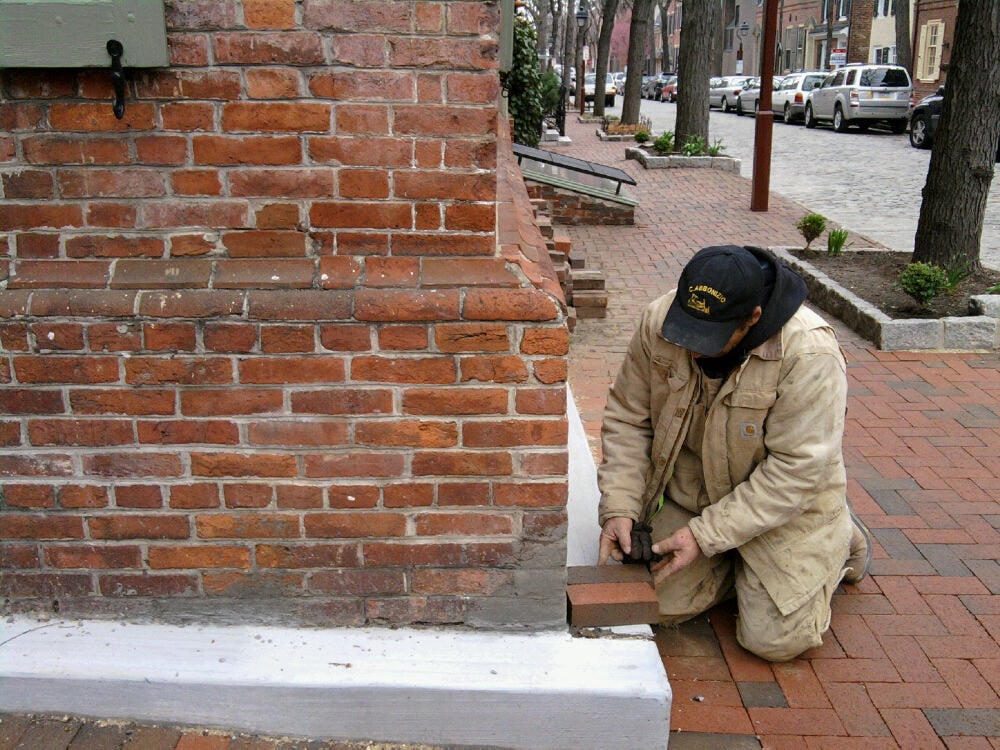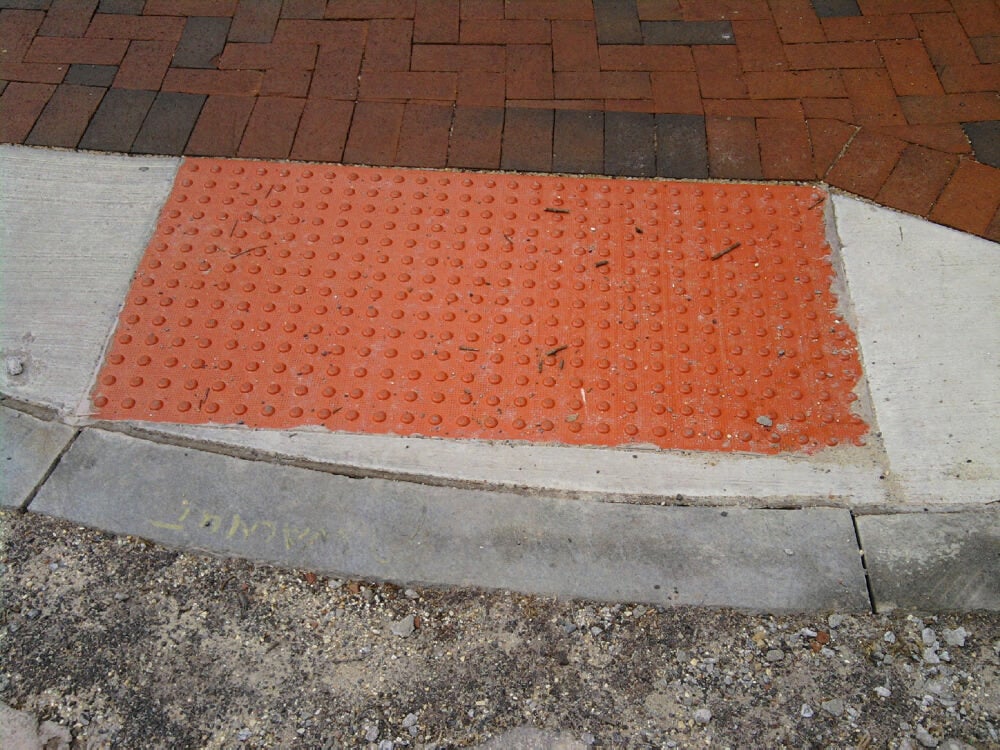Sidewalk project generates state historical review
The Pennsylvania Historical and Museum Commission wants a full review of the potential negative impacts a sidewalk ramp project could have on historic resources in Society Hill and other neighborhoods, said Society Hill Civic Association President Rosanne Loesch.
While not every street is slated for resurfacing at this time, the boundaries extend from Front Street to Broad and from South to Market. The city continuously resurfaces streets, and Americans with Disabilities Act regulations that became effective in 2009 require that any street re-surfacing project include ramps built at an 8.33 percent grade, among other stringent requirements.
“The national historic district goes from river to river,” Loesch said.
Loesch hopes that when the review is over, all of the ramps will be made mostly of brick, like the neighborhood’s sidewalks, instead of the planned concrete. And she hopes that there are zero cheek walls – curb-like structures used to protect foundations exposed when the sidewalk level is dropped to accommodate the proper ramp slope.
“We’re very happy that this state-level review is going to take place,” Loesch said.
A few weeks ago, workers began installing ramps made mostly of concrete but with a nubbed, fiberglass composite insert. In some instances, the grade of the sidewalks abutting the ramps must be lowered in order to meet that grade. And in some of these cases, lowering the sidewalks exposed foundations of adjacent buildings. To protect those foundations, workers were planning to install concrete structures against the buildings that resemble curbs.
They had installed one of these cheek walls at 3rd and Delancey streets when Society Hill Civic and the Preservation Alliance asked the city to stop the work. It was the color of the ramps that first concerned Society Hill residents – the light gray and orange-red were not the colors they had agreed to. Residents, too, became alarmed that historic homes were being marred – and that homeowners would have trouble maintaining their foundations with a big chunk of concrete in the way.
The city stopped portions of the project and asked PennDOT and the Pennsylvania Historical and Museum Commission for help in finding an alternative. Assistant managing director for the city’s office of transportation Stephen Buckley also said that the concrete portion of the ramps would be darkened, and that the insert supplier, which had sent the wrong color, was sending the darker, brick red the association had agreed to.
But Loesch said that her association is hoping when the state-led study of the project is over, the city agrees not to use cheek walls anywhere within the nationally and locally recognized Society Hill Historic District, but also to use bricks rather than cement for as much of the ramps as possible.
Buckley, who could not be reached for comment for this article, said when the decision was made to stop the work that no one involved with the initial meetings thought cheek walls were a good idea at locations of buildings that are individually recognized as historic. He was not certain whether they were appropriate at buildings that are not individually recognized, but listed as contributing to the Society Hill Historic District. He thought they would be OK at buildings that are neither historic nor contributing. Wherever cheek walls are not used, something must be done to protect the exposed foundations, Buckley said. The city has talked about hiring a contractor with historic building experience to instead extend the buildings’ facades down to the new sidewalk level. Any plan would need PennDOT approval.
The city sought the advice of local and state experts, and also asked for a list of the historic status of homes on all the corner properties. The ramp work ties in with crosswalks, so only corner properties are impacted. And it turns out that every corner property in the project area is either itself historical or a contributing property.
The city’s request for help led Susan Zacher, a Pennsylvania Historical and Museum Commission historic preservation supervisor, to tour the project area last week. PHMC spokesman Howard Pollman said that Zacher’s findings would be summarized in a formal letter, and that he could not provide any further information yet.
A complete historic review to gauge whether a project will have any negative impact on historic resources that are either on the National Historic Register or are qualified to be is required whenever federal dollars are used to pay for a project or a federal permit is required. Of the project’s $7.55 million cost, $3.67 million is covered by federal stimulus funds, funneled to the city through PennDOT.
These reviews consider what impact a project could have on historic resources, whether those impacts could be avoided, and if not, what can be done to either remedy the harm or make amends for it. For an example of how detailed and long a process this can be, think back to the historic review that took place around SugarHouse Casino.
Buckley said earlier this month that the city wants to protect historic assets, but it is important to remember the point of this project is to make it easier for everyone to get around on the city’s streets. Not meeting the ADA standards would also put the city at risk of losing federal funding.
Back in 2009, both the PHMC and PennDOT reviewed this project and okayed the materials used for the ramps. The city historical commission ruled that the use of ramps would have no negative impact on the historic district. But none of these agencies, nor the city, nor Society Hill Civic knew the cheek walls would be used.
It was also in 2009 that Society Hill Civic approved the gray of the concrete and a brick-red and inset color. But Loesch said the association was never given the choice of any other materials.
The association is okay with the fiberglass composite, textured inserts, but wants all, or as much as possible, of the other portions of the ramps – such as the side pieces called “wings” and the landing – to be made of brick.
If this cannot happen on every corner, Loesch said, the association at least wants special consideration given to intersections near a list of 13 of the community’s most historic properties: Head House Square, St. Peter’s Churchyard, Old Pine Church Graveyard, Physick House, Pennsylvania Hospital, Holy Trinity Church, The Kosciusko House, Mother Bethel Church, Old St. Mary’s Church, the Episcopal Diocese, St. Peter’s School, two homes on the south east and south west corners of American and Spruce streets, and a home at Spruce and 5th that was built in 1770.
Meetings between Society Hill Civic, city officials, PennDOT and the local and state preservationists continue.
Reach the reporter at kgates@planphilly.com.
WHYY is your source for fact-based, in-depth journalism and information. As a nonprofit organization, we rely on financial support from readers like you. Please give today.





